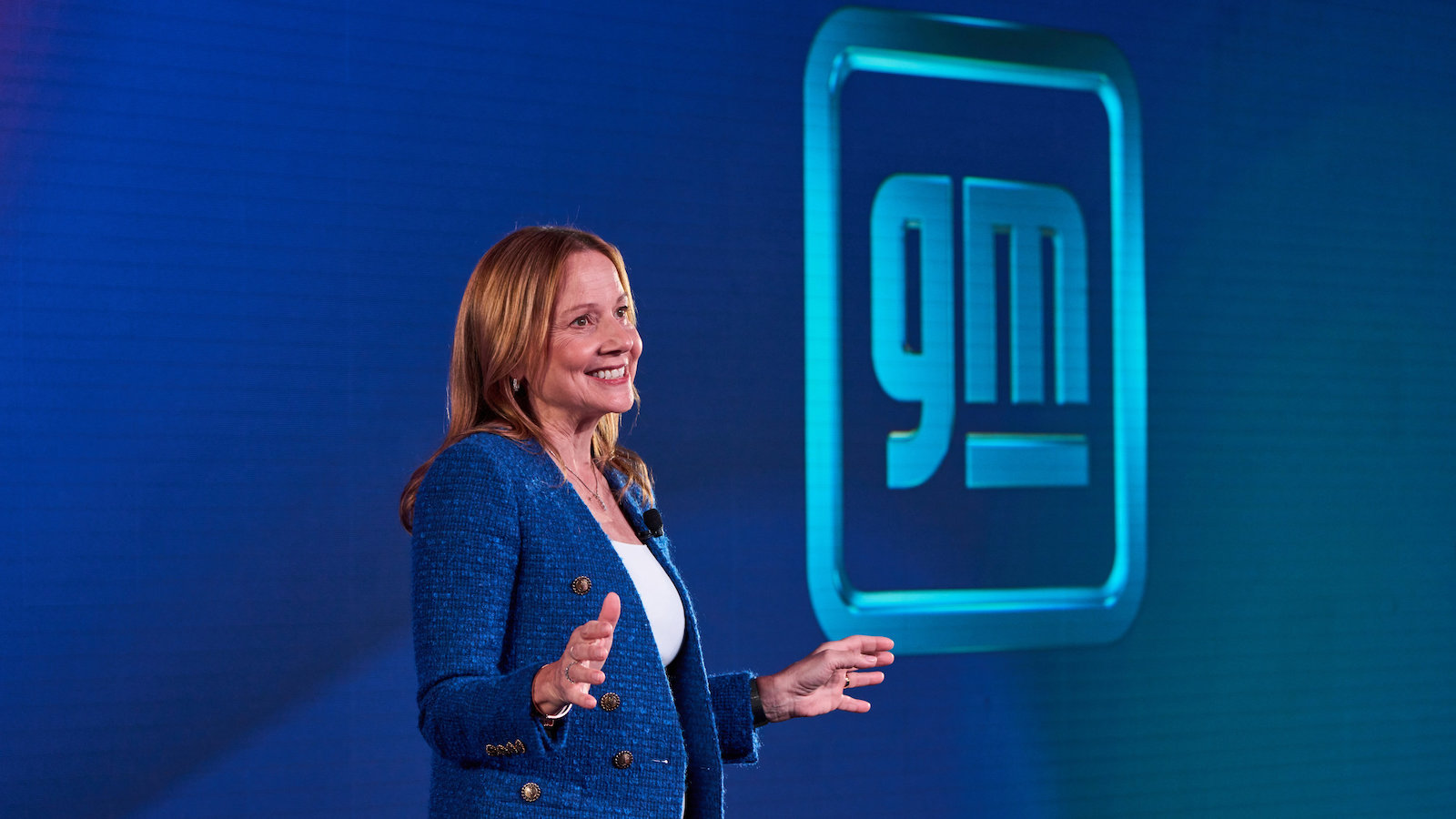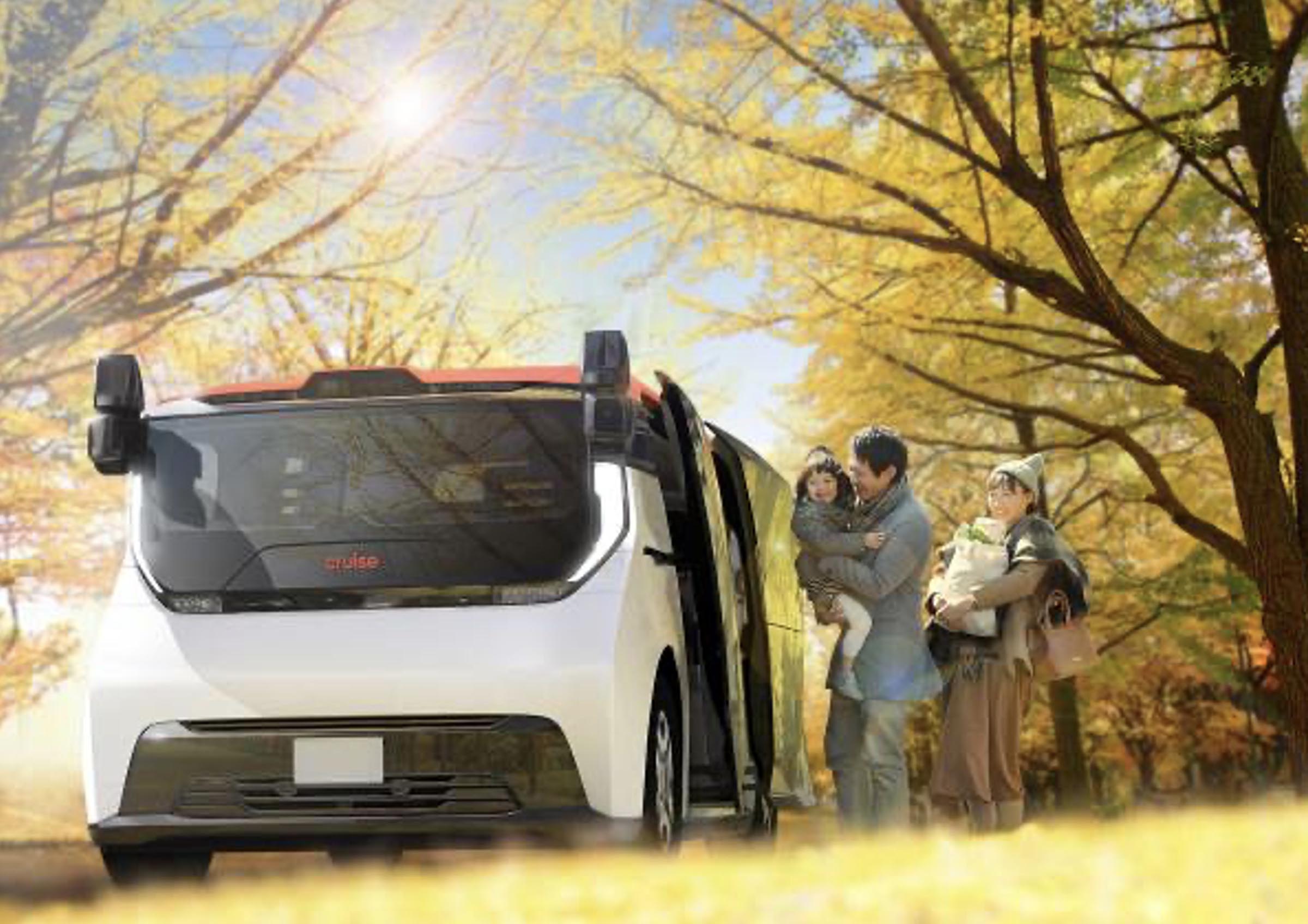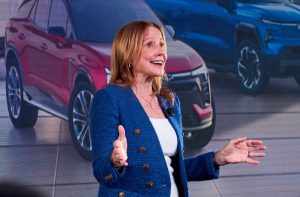GM Chair and CEO Mary Barra told reporters Monday evening the company remains focused on its coming array of EVs, and that hybrids are not on the agenda — for the U.S. anyway. She also dispelled any notion of a looming retirement.

General Motors Chair and CEO Mary Barra, shown here at the 2021 event, told the Automotive Press Association during its annual holiday fireside chat the company is staying the course with EVs.
General Motors Chair Mary Barra remains confident in the company’s plans to focus on electric vehicles remain firmly in place even as its sets aside cash for shareholders and takes a hard look at Cruise, the company’s autonomous vehicle subsidiary.
GM, despite some setbacks this year in the delivery of vehicles with Ultium batteries, the automaker remains committed to its EV strategy, added Barra during a meeting with Detroit’s Automotive Press Association in Detroit Monday evening.
While the company uses hybrid technology in China because that what the government requires, it does not plan on adding more hybrids to its product line in North America where GM remains committed to EVs.
Ultimately, the pace of EV adoption will be decided by customers, she said. But there are clear signs the number of consumers will consider EVs is growing. “I think we reached a tipping point in 2021,” said Barra, when more customers said they were willing to think seriously about purchasing an EV.
However, affordability and the state of the EV charging network are still issues that need to be addressed, she said.
“We’re going to be led by the customer,” Barra said. “But I do believe this transition will happen over a period of time,” added Barra, adding trucks with internal combustion engines will remain critical to GM’s success for the next several years.
A change in the White House from the pro-EV Biden administration to an anti-EV Trump administration won’t block the adoption of EVs, according to Barra, who also indicated she has no plans for retiring.
“We can’t change every four years depending on what happens in Washington,” added Barra, noting GM has invested billions of dollars in the EV technology.
AVs remain part of future plans
Barra remains confident autonomous vehicles will remain part of GM’s future despite the recent setbacks at Cruise.
Two independent reviews or investigations of Cruise operations, including an extensive review of the unit’s safety record and procedures should be finished in early 2024, Barra noted. “We’re very focused on righting the ship,” said Barra, who accepted the resignation of Cruise CEO and founder Kyle Vogt last month after an accident in San Francisco.
The rollout of the Cruise’s AVs has been scaled back and construction of autonomous Origin also was put on hold.
GM — and Cruise — understand the rollout of the AV technology will not only include great technology but also addresses the concerns of regulators and the local authorities, including the first responders from the fire and police departments, added Barra.
But the CEO declined to comment on whether she believes GM has been treated more harshly by regulators than Tesla, which has seen its self-driving technology be involved in as many as two dozen fatal crashes.
Reports Monday noted Cruise now faces potentially steep fines for not properly notifying a California regulator after one of the company’s Cruise autonomous vehicles struck a woman in San Francisco in early October.
Cruise informed the California Public Utilities Commission of the accident the day after it happened, but reportedly failed to provide critical details about the incident. Tesla vehicles operating its “full-self-driving technology” have been involved in several accidents and the details are frequently omitted from key reports.
GM will then lay out a new direction for Cruise, admitting plans for rolling out a personal version of an autonomous vehicle have proven overly ambitious.

Officials say the company is focusing on the Cruise Bolt EVs right now in just one city as it looks to improve the technology.
The personal autonomous vehicle might not appear until the end of decade, rather than the middle, she said.
Stock buyback sign of stability
The $10 billion stock re-purchase plant GM rolled out last week to help lift its share price is an outgrowth of the company’s success in recent years, Barra said, and a sign of the company’s stability.
GM laid out its capital allocation plans several years ago. But events such as the pandemic, the semiconductors shortage, and the need to negotiate a new labor agreement with the United Auto Workers had to addressed before GM could finalize a new plan for returning additional cash to shareholders.
“We increased the dividend, and did some small buybacks,” noted Barra, adding now the company can do more shareholders.





0 Comments